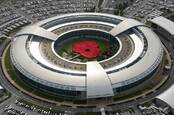This article is more than 1 year old
NHS could have 'fended off' WannaCry by taking 'simple steps' – report
Service was warned of the risks a year before ransomware hit
The UK health service could have fended off WannaCry "if only it had taken simple steps to protect its computers", but failed to heed warnings about falling victim to a cyber attack a full year before that incident happened.
This was among the findings of an investigation by Blighty's National Audit Office, which today published a report, WannaCry cyber attack and the NHS in England, focused on the impact on Britain's health service and its patients; why some parts of the NHS were affected; and the effectiveness of the response.
WannaCry hit 34 per cent of health trusts in England, although the full extent of the disruption and financial impact is unknown. Thousands of appointments and operations were cancelled and in five regions of the UK patients had to travel further to accident and emergency departments.
The watchdog found that the health service did not formally respond to the cyber attack warning from early 2016 until July 2017.
Meg Hillier, chair of the Public Accounts Committee, said:
"The NHS could have fended off this attack if it had taken simple steps to protect its computers and medical equipment. Instead, patients and NHS staff suffered widespread disruption, with thousands of appointments and operations cancelled.
"The Department of Health failed to agree a plan with the NHS locally for dealing with cyber attacks so the NHS response came too late in the day.
"The NHS and the Department need to get serious about cyber security or the next incident could be far worse."
All NHS organisations infected by WannaCry had unpatched or unsupported Windows operating systems so were susceptible to the ransomware.
However, whether organisations had patched their systems or not, taking action to manage their firewalls facing the internet would have guarded organisations against infection, it said.
"NHS Digital told us that the majority of NHS devices infected were unpatched but on supported Microsoft Windows 7 operating systems."
Unsupported devices, those on XP, were in the minority of identified issues.
NHS Digital has also confirmed that the ransomware spread via the internet, including through the N3 network, the broadband network connecting all NHS sites in England. There were no instances of the ransomware spreading via NHSmail, the health service's email system.
Back in 2014, the Department of Health and Cabinet Office wrote to trusts saying it was essential they had "robust plans" to migrate from old software, such as Windows XP, by April 2015.
In March and April 2017, NHS Digital had issued critical alerts warning organisations to patch their systems to prevent WannaCry. However, before May 12, the Department had no formal mechanism for assessing whether local NHS organisations had complied with their guidance and whether they were prepared for a cyber attack.
Amyas Morse, head of the National Audit Office, said today:
"The WannaCry cyber attack had potentially serious implications for the NHS and its ability to provide care to patients. It was a relatively unsophisticated attack and could have been prevented by the NHS following basic IT security best practice.
"There are more sophisticated cyber threats out there than WannaCry so the Department and the NHS need to get their act together to ensure the NHS is better protected against future attacks."
In order to mitigate risks, the NHS pledged to learn from WannaCry and is taking action.
These include developing a response plan setting out what the NHS should do in the event of a cyber attack; ensuring organisations implement critical CareCERT alerts (emails sent by NHS Digital providing information or requiring action); and ensuring that organisations are taking the cyber threat seriously. ®

